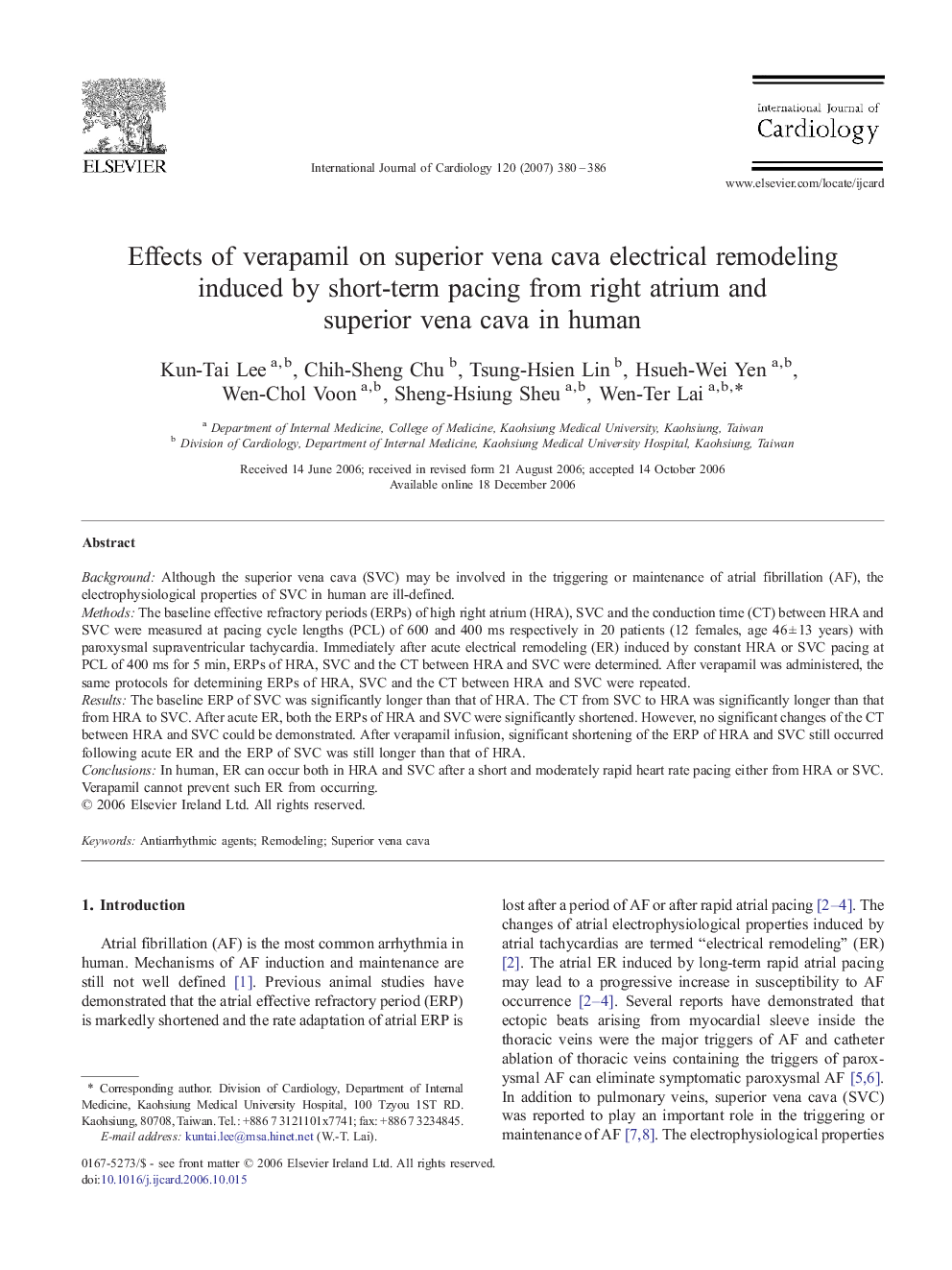| Article ID | Journal | Published Year | Pages | File Type |
|---|---|---|---|---|
| 2935930 | International Journal of Cardiology | 2007 | 7 Pages |
BackgroundAlthough the superior vena cava (SVC) may be involved in the triggering or maintenance of atrial fibrillation (AF), the electrophysiological properties of SVC in human are ill-defined.MethodsThe baseline effective refractory periods (ERPs) of high right atrium (HRA), SVC and the conduction time (CT) between HRA and SVC were measured at pacing cycle lengths (PCL) of 600 and 400 ms respectively in 20 patients (12 females, age 46 ± 13 years) with paroxysmal supraventricular tachycardia. Immediately after acute electrical remodeling (ER) induced by constant HRA or SVC pacing at PCL of 400 ms for 5 min, ERPs of HRA, SVC and the CT between HRA and SVC were determined. After verapamil was administered, the same protocols for determining ERPs of HRA, SVC and the CT between HRA and SVC were repeated.ResultsThe baseline ERP of SVC was significantly longer than that of HRA. The CT from SVC to HRA was significantly longer than that from HRA to SVC. After acute ER, both the ERPs of HRA and SVC were significantly shortened. However, no significant changes of the CT between HRA and SVC could be demonstrated. After verapamil infusion, significant shortening of the ERP of HRA and SVC still occurred following acute ER and the ERP of SVC was still longer than that of HRA.ConclusionsIn human, ER can occur both in HRA and SVC after a short and moderately rapid heart rate pacing either from HRA or SVC. Verapamil cannot prevent such ER from occurring.
